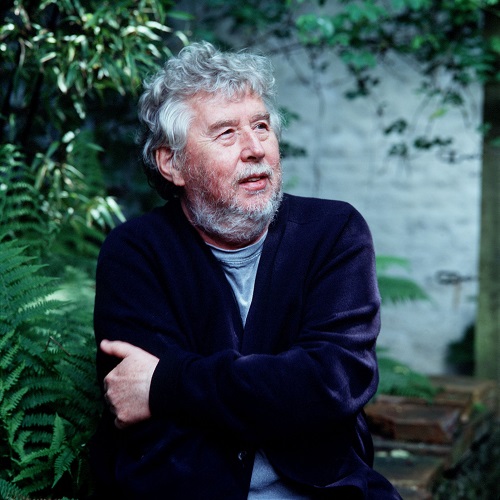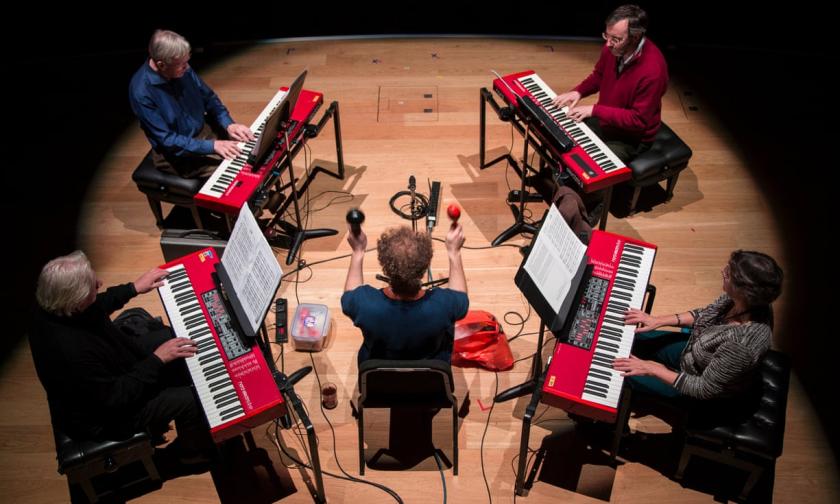Kings Place takes a broad and "curated" approach to season programming, and events often have to fit into very nebulous and abstract themes. This concert by the London Sinfonietta was part of a strand called "Time Unwrapped" and sought to explore the role of time in music. In the event, this potentially infinite subject became an opportunity to showcase various diverse strands of the Sinfonietta’s programming, under a broad rubric about absolute and perceived notions of time. The former was acknowledged by having each of the three sections begun exactly on the hour – of seven, eight and nine – with a spotlit clock at the back of the stage driving home the point. And most of the repertoire explored temporal dislocation in one way or another – a satisfying mix, however arbitrary.
The evening began with a pianola demonstration from Rex Lawson, the instrument’s acknowledged contemporary master. Lawson performs ("pedals", as he puts it) on an upright mahogany-encased unit that fits onto the front of a standard piano, in this case the Kings Place Steinway. His introductions were affable and entertaining, but without going into too much detail about the workings of his device – so much the better, the mystery is part of the appeal. He was more articulate on the role of rubato in pianola performance, performing rolls of Rachmaninov and Chopin, in which the pianolist is required to consciously disrupt the metrical flow, and also an interesting one from Percy Grainger, Shepherd’s Hey, where the composer had indicated the tempo changes himself on the roll. But the highlight was a series of Nancarrow Studies, music that Lawson acknowledged was written for fully mechanical performance, but then went on to demonstrate the value of having a human foot on the accelerator pedal in some truly exhilarating readings.
As the clock struck eight, we moved on to a segment of American Minimalism. Morton Feldman’s Bass Clarinet and Percussion is a typical late work, with quiet repeating modules in the clarinet accompanied by two percussionists, playing inscrutable, quiet clusters in rhythmic unison. Feldman often makes huge technical demands on his players to only middling musical effect for his listeners, but the efforts of these three performers mostly paid off. Clarinettist Robert Plane sometimes struggled to maintain the evenness of his tone, especially in the continuous high, quiet music, yet the endlessly still mood persisted, and to eerie effect. This was followed by Steve Reich’s early work Four Organs. This is Reich at his most confrontational, presenting simple rhythmic patterns in gradual evolution, without any apparent concern for the musical implications of their resulting dissociation. But the squelchy, analogue synthesisers provided appealing period sound. Kudos, too, to percussionist Louise Goodwin, who had the unenviable task of playing a continuous quaver pace on maracas throughout the whole work.
 The third segment opened with Birtwistle’s Pulse Sampler (1981), but the composer had substantially rewritten the work, even since the programme went to press. The note described the piece as for oboe and claves, but the stage was set up with a substantial percussion section instead. Birtwistle (pictured left by Hanya Chlala) introduced the performance, and it was clear that he had been inspired by the theme of this concert to revisit the piece. He also mentioned a recent visit to the exhibition of Anni Albers’ work at Tate Modern. She was a member of the Bauhaus group who specialised in weaving. The connection for Birtwistle was the parallel between the fixed lateral dimension of weaving and the role of pulse in music.
The third segment opened with Birtwistle’s Pulse Sampler (1981), but the composer had substantially rewritten the work, even since the programme went to press. The note described the piece as for oboe and claves, but the stage was set up with a substantial percussion section instead. Birtwistle (pictured left by Hanya Chlala) introduced the performance, and it was clear that he had been inspired by the theme of this concert to revisit the piece. He also mentioned a recent visit to the exhibition of Anni Albers’ work at Tate Modern. She was a member of the Bauhaus group who specialised in weaving. The connection for Birtwistle was the parallel between the fixed lateral dimension of weaving and the role of pulse in music.
To this end, he recreated Pulse Sampler, originally for solo oboe with percussion accompaniment, into a full duet between the two players. The new percussion part is still dominated by woody sounds, a range of wood blocks and temple blocks, but also expands into cymbals and untuned metallic percussion, as well as a cajón (a first for Birtwistle?) on which the percussionist sits. An excellent performance here from both players, but especially oboist Melinda Maxwell, always lyrical and clear, despite Birtwistle’s often tortuous lines. And to conclude, Stockhausen’s Zeitmasse, an early work for wind quintet (cor anglais replacing horn). Birtwistle implied that Stockhausen got the heart of the programme’s time theme better than any of the preceding composers. Unusually, he did so without any overt theorising or applied philosophy, and the Sinfonietta did his score full justice, a core-repertoire piece, if ever there was one for this ensemble.













